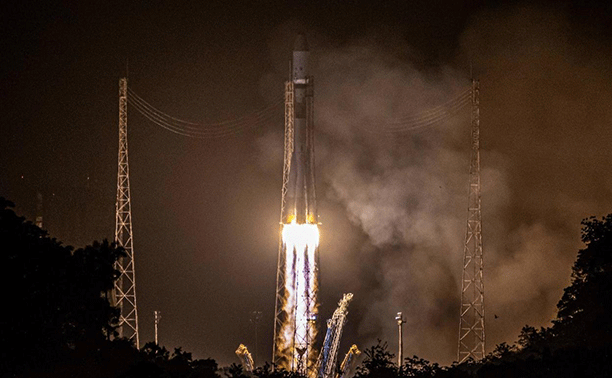CHEOPS and OPS-SAT, dual launch with GMV technology

On Wednesday 18 December, the European Space Agency (ESA) successfully launched two missions, CHEOPS (CHaracterising ExOPlanet Satellite) and OPS-SAT, from the spaceport in Kourou (French Guiana).
Both missions use GMV technology and travelled on board the Soyuz-Fregat rocket, together with the first satellite of the second-generation Cosmo-SkyMed constellation of the Italian Space Agency (ASI).
CHEOPS mission focuses on the characterization of exoplanet, and it is part of the European scientific programme Cosmic Vision 2015-2025. It will orbit 700 km above the earth and is the first mission dedicated to monitoring stars with exoplanets, particularly those with a size between that of the Earth (6,371 km) and Neptune (24,622 km).
CHEOPS, led by Airbus in Spain, is a partnership between the ESA and the Swiss Space Centre, being a consortium of research organisations, universities and private entities from Germany, Austria, Belgium, Spain, France, Hungary, Italy, Portugal, the UK and Sweden.
GMV has been involved in the mission since the beginning, being responsible for the mission analysis, which served to verify the viability and define the main characteristics of said mission. Subsequently GMV has been responsible for the integration of the MOC (Mission Operations Center), the development and integration of the FDS (Flight Dynamic System), the MCS (Mission Control System), the SCSIM (Spacecraft Simulator), and the operations automation system.
In addition, GMV was entrusted with integrating these elements with the terrestrial stations for Monitoring, Telemetry and Tele-Command of the National Aerospace Techniques Institute (INTA), located in Torrejón de Ardoz (CEIT) and Villafranca del Castillo (ESAC).
For its part, OPS-SAT, which is the ESA's first CubeSat mission, aimed towards carrying out various experiments in the field of mission control. The onboard processing platform is the main feature of this nanosatellite, including a flexible environment and a totally reconfigurable logic. This nanosatellite, that is only 30 centimeter high, contains an experimental computer that is ten times more powerful than that of any current ESA spacecraft.
OPS-SAT is open to public use and is controlled from the SMILE laboratory (Special Mission Infrastructure Lab Environment), a new mission control and validation environment, located in the ESA's operations center in Darmstadt (Germany).
In this mission, GMV has been in charge of development and implementation of the full on-board software as well as various system components crucial for control and communication with the satellite. Those components include Attitude Determination and Control System (ADCS), Failure Detection Identification and Recovery (FDIR) and the Mission Operation Services (MOS), which is an information exchange protocol standard.
Photos: ESA